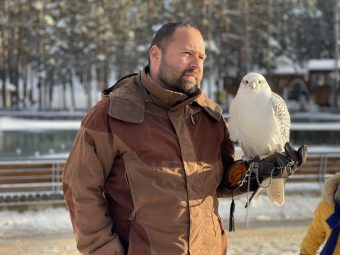The sky above Serbia has always been adorned with a multitude of birds of prey, and one of them – the Eastern Imperial Eagle- has a special place on our country’s official coat of arms. Throughout history, falcons have enjoyed the same respect because, as faithful companions of the nobility in hunting, they have become part of the national emblem.
Emperor Dušan often hunted with peregrine falcons, and in the Middle Ages, Serbia was one of the most important countries in Europe as far as falconry was concerned. Unfortunately, these birds of prey have lost their popularity today, and devastating news about poisoned birds destroyed nests and poaching is becoming more frequent. The extermination of birds of prey in certain locations has resulted in a dramatic disruption of the ecosystem because birds of prey hunt rodents, reptiles, and other birds and thus keep their population under control.
That is why numerous animal protection associations are using all available resources to ensure that birds of prey are not wiped out of Serbia’s biodiversity. Fortunately, there are also people who, because of their love for feathered raptors, have chosen an unusual profession and are ready to contribute to protecting these species.
IN FOCUS:
- Energy Security Through the Development of the Prosumer Market
- Old Press In a New Guise
- Zagreb on the Path to Climate Neutrality
Perica Miletić from Kraljevo is one of the few falconers in Serbia. His interest in falconry developed in high school. Today, he says, only very few people are engaged in falconry and those who keep birds of prey mostly take care of them for fun and as a hobby. Falcons are often bought on the black market, and smugglers usually catch them illegally in the wild, although many captured birds are endangered. Raising falconry to a higher level and complying with all animal welfare criteria requires a lot of effort. Although every bird enjoys royal treatment in Mr Miletić’s kennel, he does have a favorite bird.
“My favorite raptor is the Gyrfalcon. It is the largest and most beautiful falcon in the world. It lives in the polar regions of Russia, Alaska, northern parts of Scandinavia and Canada. It tolerates very low temperatures well and is the only predator in the north all year round. This falcon has four morphoses – black, grey, silver and white, of which the white one is the most beautiful. Also, white falcons are the most valued in the world”, explains Mr Miletić.

He says that buyers from developed Arab countries are very interested in falcons bred in Serbia, where, unlike our country, numerous competitions in flight speed and appearance are held. However, true falconers, in addition to raising birds, often contribute to the care and treatment of many endangered and injured animals. Mr Miletić, as a great bird lover, builds houses for smaller birds every winter and feeds them, and several times, he had the opportunity to save some.
In our country, many feathered raptors are considered endangered species and the saker falcon and peregrine falcons are at the very top.
The peregrine falcon lives in mountainous regions of our country, such as Tara, Kopaonik, Stara Planina, and Suva Planina. It nests on high cliffs in canyons and gorges and feeds exclusively on birds. According to official data, the main threats to peregrine falcons are habitat destruction, poaching, pesticide poisoning, and a reduction in the number of prey species. However, Mr Miletić notes that pigeon fanciers often destroy falcon nests and use various poisons to suppress the falcon population.
Prepared by: Milena Maglovski
Read the whole story in the new issue the Energy portal Magazine AGROSOLAR ENERGY AND RES.



